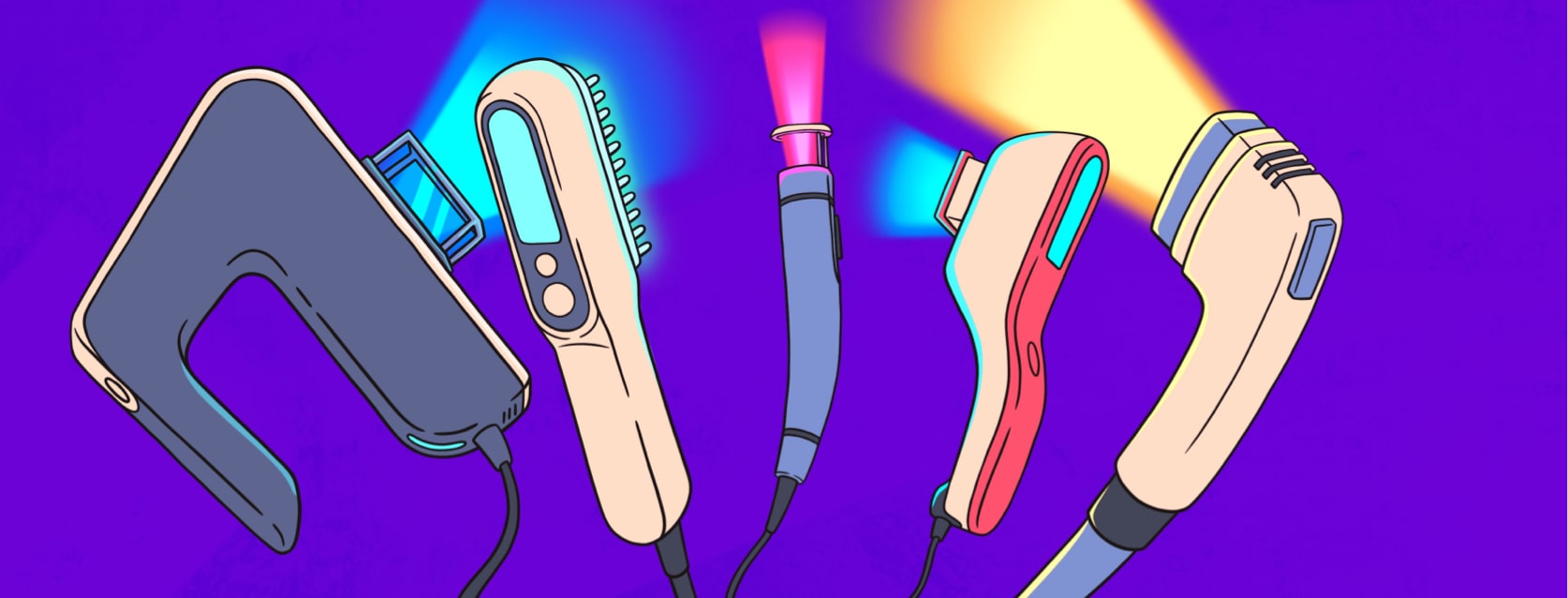Different Types of Light Therapy for Psoriasis Treatment
Light therapy (also called phototherapy) uses artificial light waves to treat psoriasis. Studies show that 2 out of 3 people have significant improvement in their psoriasis with phototherapy. Several types of phototherapy are available.1
What is phototherapy?
Light is measured in wavelengths with a unit called nanometers (nm). The wavelengths used for phototherapy are the same found in natural sunlight. Ultraviolet A (UVA) and ultraviolet B (UVB) are the wavelengths used most often for phototherapy. UVA and UVB slow down the process in skin cells that leads to psoriasis plaques.1,2
UVA wavelengths range from 320 to 400 nm. UVB light has a wavelength from 280 to 320 nm. Broadband UVB (BB-UVB) phototherapy uses the entire range of UVB light (280 to 320 nm).1
However, the most common treatments use a range of UVB wavelengths from 311 to 313 nm. This is called narrow-band UVB (NB-UVB).1
How is phototherapy given?
Phototherapy is usually given in a doctor’s office. Phototherapy sessions are scheduled several times per week for several weeks. Once your psoriasis has improved, treatments may be given less often. At-home treatment also may be an option for maintenance. Your treatment schedule will vary based on your response to the phototherapy.1,2
Types of phototherapy
There are different types of equipment used to deliver phototherapy. It can be given as either a targeted or whole-body treatment. Doctors use targeted treatment when psoriasis affects less than 10 percent of the body. Whole-body treatment is used when psoriasis affects 10 percent or more of the body, or many different parts of the body.3
UVB phototherapy
Doctors use narrow-band UVB more than other types of phototherapy because of its safety, convenience, and cost. It is safe to use in children, people who are pregnant or breastfeeding, and people with a weakened immune system. NB-UVB is often combined with topical or oral therapy to improve response.1
The different ways to deliver NB-UVB include:2
- Targeted UVB: This uses an excimer laser, excimer light, and targeted narrow-band UVB lights. The advantage of targeted therapy is that higher doses can be applied to small areas.
- Whole-body phototherapy units: These are individual pods in which you stand or lie down. Whole-body treatment is effective for widespread psoriasis.
Broadband UVB is an older form of phototherapy that may be used if NB-UVB is not available.1
Excimer laser
The excimer laser delivers targeted doses of 308 nm UVB light to smaller areas. Excimer laser treatment is the most effective form of targeted NB-UVB phototherapy. It is suitable for psoriasis of the:1
- Scalp
- Hands and feet
- Ears
- Armpits
- Groin
- Other small areas
Overall, 7 out of 10 patients report a 75 percent improvement in their psoriasis after a course of excimer laser treatment. Combining excimer therapy with topical steroids can make it more effective.1
Goeckerman therapy
Goeckerman therapy involves applying a topical medicine called coal tar before UVB therapy. Therapy sessions are often scheduled daily. Because of the cost and time required for this treatment, it is less common than other forms of phototherapy. But it is an effective option for people with severe psoriasis that does not respond to other treatments.1
PUVA phototherapy
When UVA therapy is used, it is combined with a medicine called psoralen, which makes your skin more sensitive to light. This combination therapy is called PUVA.4
PUVA is suitable for:1,4
- Plaque psoriasis
- Psoriasis on the hands and feet
- Pustular psoriasis of the hands and feet
- People who do not respond well to NB-UVB therapy
Psoralen can be given orally, topically, or as a soak. Some studies show that PUVA is slightly more effective than NB-UVB phototherapy. But it has more risks, including:1,4
- Redness
- Blistering
- Nausea
- Itching
- Skin aging
- Fingernail damage
- Risk of skin cancer
PUVA can be combined with excimer laser treatment to reduce the total exposure to ultraviolet light.1PUVA is not used in children younger than 12 or during pregnancy. Do not use tanning beds while being treated with PUVA due to the risk of life-threatening burns.2
Additional light therapies
Other forms of light therapy with the potential for treating psoriasis include:1,4,5
- Pulsed dye laser (PDL): Used for nail psoriasis
- Low-level light/laser therapy: Uses visible light in various wavelengths
- Intense pulsed light (IPL): Uses multiple wavelengths to target blood vessels
What are the risks of phototherapy?
The most common side effect of phototherapy is redness. Other side effects may include:1,3
- Sunburn-like reaction
- Cold sores
- Dark spots and wrinkles
- Risk of skin cancer
If you have psoriasis, talk to your doctor about light therapy. It may be a safe and effective treatment option for you.

Join the conversation